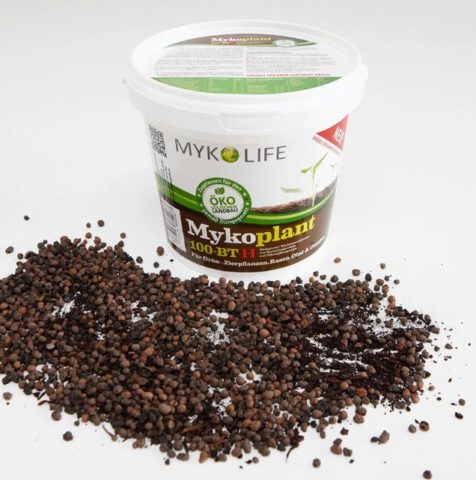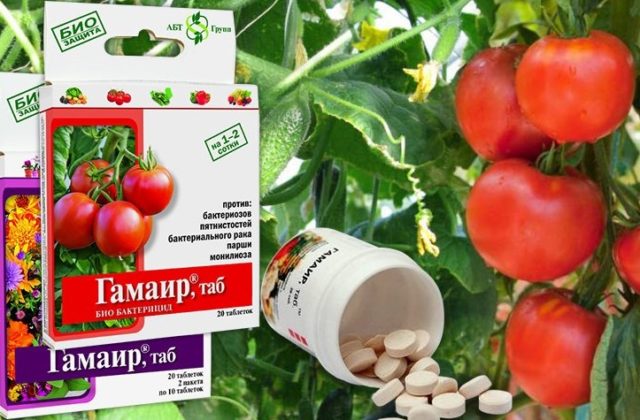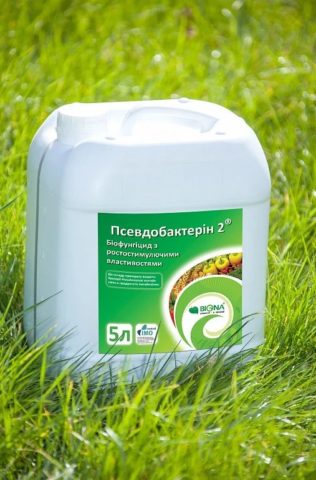Content
Fitolavin is considered one of the best contact biobactericides. It is used to combat various fungi and pathogenic bacteria, as well as a prophylactic agent that protects the culture from all kinds of diseases. Instructions for use Phytolavin for plants indicates that the drug has low phytotoxicity. It is used for processing vegetable, fruit and berry and grain crops.
Description of the drug Fitolavin
Fitolavin is considered one of the most effective systemic bactericides. The mechanism is based on the fact that streptotricins act on the bacterial ribosome and suppress protein synthesis.
Fitolavin's composition
Phytolavin has the main active ingredient - a complex of live spore bacteria Streptomyces Lavendulae, which penetrates the plant and has antibiotic properties. Streptotricins D and C, which are part of the drug, have a pronounced antifungal effect.
Forms of issue
On sale you can find a WRC (water-soluble concentrate), which is optimal for drip irrigation.
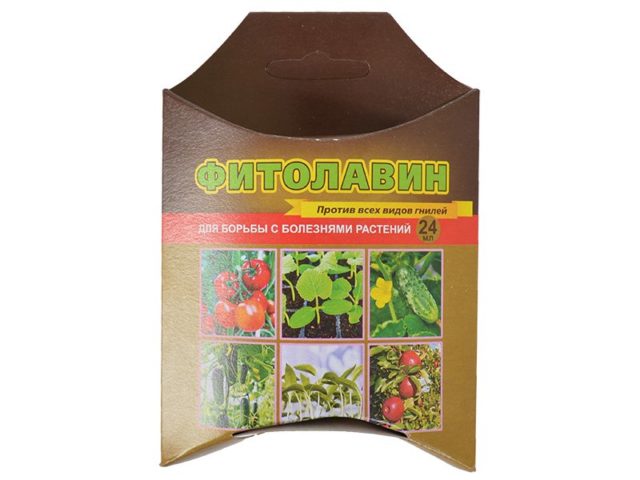
In garden stores they sell Phytolavin in 2 ml vials and ampoules, as well as in bottles with a volume of 100 ml to 5 liters.
The product is produced by various Russian manufacturers. The original preparation Fitolavin (pictured) should have a light brown color.
Application area
Phytolavin is effective against a number of fungal diseases such as moniliosis (fruit rot), Alternaria, black bacterial spot, apical and root rot, angular leaf spot, tracheomycotic and bacterial wilting, soft bacterial rot and black leg.
Consumption rates
The consumption of the drug varies depending on the culture:
- Berry and fruit crops are sprayed with Fitolavin solution at the rate of 2 liters for each bush or 5 liters for a tree.
- A houseplant in a pot needs about 120-200 ml.
- When processing seedlings, a seedling needs from 30 to 45 ml.
In case of prolonged storage, Fitolavin loses its antibacterial properties.
Fitolavin's analogs
Fundazole, which belongs to the benzimidazole class, is considered a worthy analogue for the protection of orchids and other flowers. The main active ingredient is benomyl. The pronounced fungicidal effect of the drug is achieved by suppressing the vital activity of harmful spores and bacteria.
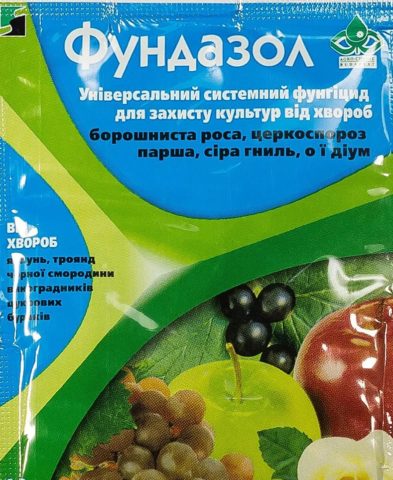
Fundazole is not phytotoxic, but it poses a danger to humans
When working with him, you must use a respirator and gloves. Sold in garden stores as a white powder with an unpleasant odor. Fitolavin has other analogues:
- Mycoplant. Sold in powder form. It has a protective and restorative effect. Used for pre-sowing treatment.
- Gamair. Antibacterial antifungal drug, which contains various soil bacteria. The main advantage is very low toxicity, which excludes negative consequences even in case of overdose.
- Pseudobacterin-2. Fungicide with a pronounced growth-stimulating effect. It is mainly used to protect cereals from helminthosporium and Fusarium root rot.
- Main component Trichodermina is the fungus Trichoderma Viridis, the spores of which, when in contact with the plant, secrete special compounds that inhibit the development of pathogenic bacteria.
There are also folk analogues of Fitolavin for grapes and fruit crops. The most common of these are onion or garlic infusions. It is used in the fight against late blight and rust.
Instructions for use of the drug Fitolavin
If the agent is used for prophylactic purposes for seedlings, they resort to rinsing or soaking in a solution. Under each seedling make from 30 to 45 ml of solution.
How to dilute Fitolavin
Fitolavin is diluted at the rate of 1 ml of the drug per 0.5 liters of water. The solution is prepared shortly before processing, since the shelf life of the finished mixture is 12 hours. The drug is diluted according to the following algorithm:
- Take purified water (temperature within + 20-24 ° C).
- The drug is added in a thin stream.
When to process
The drug can be used from the moment the seedlings appear. Subsequent processing is carried out in any of the growth phases, maintaining an interval of two weeks. You can not use Fitolavin more than twice a month, since exceeding the dosage is fraught with the resistance of fungi and bacteria. From the beginning of the spring period to the onset of autumn, three times of fungicide treatment is quite enough. Due to its low toxicity, the drug can be used even several days before harvest.
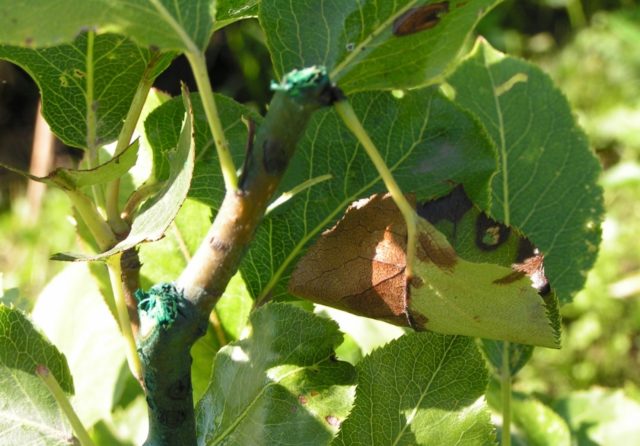
Only with a bacterial burn and moniliosis affecting an apple tree can the number of treatments be increased to five with an interval of two weeks
How to use Fitolavin for treatment
The dosage will vary depending on the task at hand. In case of infection, the fungicide treatment is carried out until the soil is completely wet. For preventive treatment, the amount of solution should be less; it is performed using a spray bottle. The whole plant is processed from the root part to the stem. For the correct use of the funds, a certain scheme is used to prevent the accumulation of antibiotics in the soil.
Vegetable crops
According to the instructions for use, Fitolavin for tomatoes is approved for use both for open ground and in greenhouse conditions. Fungicide-treated tomatoes are much less susceptible to bacterial diseases such as hollow stems and pith necrosis. Spraying is carried out during the growing season, maintaining an interval of at least 15 days. Phytolavin for tomatoes is an effective agent that increases productivity and immunity.
Fruit and berry crops
Fitolavin for strawberries and other fruit and berry crops is used on the basis of the following recommendations: a bush needs to be sprayed with two liters of solution, an adult tree needs at least five liters. The currants are processed immediately after the beginning of flowering and after a month.
Garden flowers and ornamental plants
Phytolavin for roses is used to prevent and combat angular spotting, bacteriosis, rot of roots and tubers.
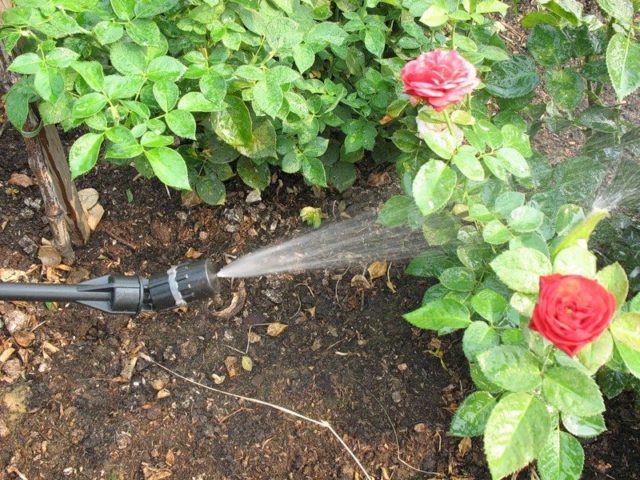
The rate of preparation of a solution for chrysanthemums and roses: 10-20 ml per 5 liters of water
For indoor plants and flowers
Indoor flowers affected by Alternaria, late blight or other fungal disease are treated with a 0.5% solution. It is applied shortly before the buds appear and after the flowering is complete. Plants that are struck by angular spotting are treated with a solution with a concentration of 0.1%. For bacteriosis and infectious diseases, a 0.2% solution is used. In most cases, one treatment is sufficient.
Pros and cons of using Fitolavin
Fitolavin is the only antibacterial agent that is allowed to be used for almost all types of crops. The drug has much more positive qualities than negative ones.
Pros:
- Possesses low phytotoxicity and does not pose a danger to insects that pollinate plants.
- It is universal and can be used both for preventive treatment and for seed dressing.
- Plant tissues easily assimilate the main active ingredient.
- A quick result is noticeable after 9-12 hours after treatment.
- The acidity of the soil does not significantly affect the effectiveness of the fungicide.
Of the minuses, it can be noted that the drug is an antibiotic, therefore it destroys a number of beneficial bacteria.
Fitolavin compatibility with other substances
The instructions for use for plants indicate that Fitolavin VRK is compatible with most herbicides, fungicides and insecticides on the modern market. The exception is bacterial preparations. If Fitolavin is used to process cucumbers and other vegetable crops, it is combined with Gamair, Alerin and other means.
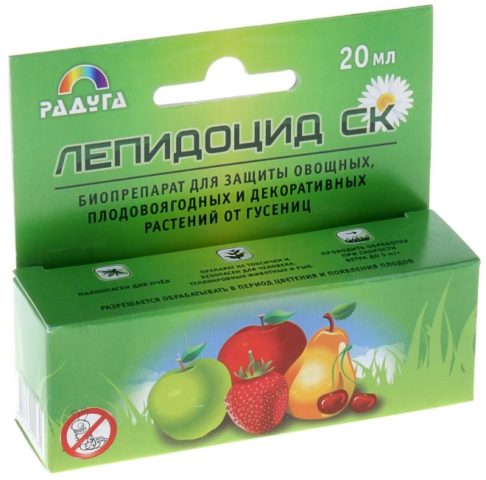
It is forbidden to use the drug simultaneously with the biological insecticide Lepidocide
To restore microflora after fungicide treatment, it will be necessary to add a full complex of NPK, as well as trace elements and vitamins. Aminokat, which is a balanced combination of plant-based amino acids, is excellent as an anti-stress agent. It is used to start physiological, biochemical and production processes. Increases the effectiveness of mineral supplements and stimulates the rate of plant development.
Comparison of the fungicide Fitolavin with other drugs
Fitolavin is considered a universal remedy that has practically no contraindications. If it was not possible to purchase this drug, you can choose a suitable analogue.
Gamair is a biofungicide designed for preventive spraying of plants and protection against a number of diseases. It is used for necrosis and burn conditions.
For the treatment of bacterial diseases, Planriz and Baktofit are used. Root rot can be fought with Alerina-B.
Which is better: Fitolavin or Fitosporin
Fitosporin is one of the microbiological preparations. It contains bacteria, living cells, spores and hay bacillus, as well as brown coal, phosphorus, nitrogen, potassium and chalk for a viscous consistency. After adding water, spores and bacteria that are in a state of suspended animation are activated and begin to actively reproduce. As a result of their vital activity, the dangerous microflora is neutralized, immunity and resistance to various diseases increase. Fitosporin is considered less dangerous than Fitolavin, but its antibacterial effect is less pronounced.
Which is better: Fitolavin or Maxim
Maxim is a contact fungicidal dressing agent that belongs to the class of phenylpyrroles. It is used for processing ornamental crops, peas, soybeans, beets, sunflowers and potato tubers. The unique active ingredient of this product is a natural antimycotic substance that destroys pathogenic microorganisms and spores of parasitic fungi, but does not negatively affect beneficial bacteria.Phytolavin, added under the root of greenhouse tomatoes, will have a pronounced effect in the case of severe fungal infection, but it is considered more toxic.
Security measures
The antibiotic Fitolavin is relatively safe for humans. It belongs to the third class (moderately hazardous substances and compounds). Bees can be released 12 hours after treatment. The ingress of the fungicide into water bodies and open sources is unacceptable. Gloves must be used while working with the drug, since Fitolavin can irritate the skin. In the process of treatment with the drug, smoking and eating food is prohibited. After completing work, you must wash your face and hands.
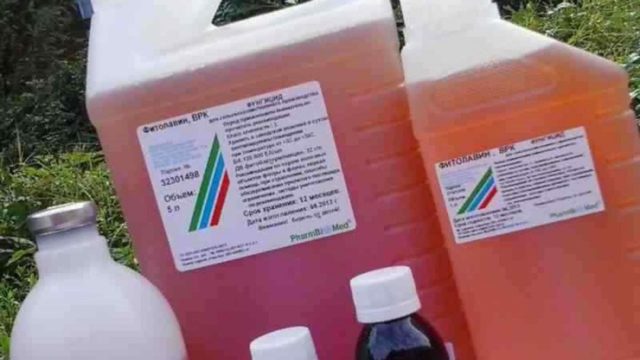
If the solution is accidentally swallowed, you need to drink several glasses of water and provoke vomiting
Storage rules
It is recommended to store Fitolavin fungicide at temperatures from +1 to +29 ° C in a dark, dry place, out of reach of children. It is forbidden to keep the product together with medicines and food. Do not freeze the drug.
Conclusion
Instructions for use Fitolavin for plants indicates that the drug is a universal remedy for combating a variety of diseases. With its help, you can cure a severe form of Alternaria in just two weeks. Diseases such as vascular bacteriosis, soft or apical rot do not pose any danger to the plant treated with this fungicide.
